Before Okinawa was part of Japan, it was its own country with its own distinct culture, language, trade relations and king. Although the Satsuma brought it into Japanese hands in 1609, and despite a close encounter with extinction during the height of World War II, indigenous Okinawans (known as Ryukyuans) have fought to survive, thrive, and maintain their cultural identity. One of the symbols of this is Shuri Castle, constantly rising from its own ashes.
The castle—and the people that built it—have a hell of a story to tell. Shuri Castle was built in 1429 by King Sho Hashi, the great Ryukyuan unifier who brought all the local kings under central rule. The castle was both the royal residence as well as well as the primary meeting place for diplomatic and trade meetings between the Ryukyuan kings and emissaries from China, Korea, Japan, Taiwan, and other countries in the region. Although it’s burned down several times in the course of its history, it’s always been rebuilt. The most recent destruction occurred during the Battle of Okinawa in World War II, when the US Navy bombed the entire island within an inch of its life to drive out Japanese soldiers and set up Okinawa as a base from which to attack the mainland. Shuri Castle, being an important fortification for the Japanese military, was unfortunately a target and was razed to the foundations. However, the Okinawan* people began a massive rebuilding project in 1972, and the castle is almost completely restored. It’s now a UNESCO World Heritage Site, an important source of tourist revenue for the prefecture, and a place for Ryukyuans to collect and share their cultural traditions and artifacts.
The grounds are massive, the castle itself surrounded by a beautiful garden of banyan trees, hibiscus, and other tropical plants, with well-paved paths throughout. We started at the lowest gate, the Shureimon. The interlocking paving stones of Ryukyuan limestone are smooth as any concrete sidewalk, and the gate rising above it delicious in its detail. Although the Chinese influence is obvious, little Ryukyuan details spring out at you: the thick white mortar between the ceiling tiles, and painted hibiscus flowers hiding on the lintels.
We followed the wide boulevard to the next major stop: the stone gate of Sonohiyan Utaki, an important Ryukyuan Shrine where the king would pray for safety before he left on journeys. A Japanese national treasure before WWII, it was badly damaged during the Battle of Okinawa but restored in 1957. The stone was black and porous where the rain had run over it, but white and smooth where it was protected. Loren, who’d been to Shuri so many times during his deployment that he’d lost count, noted that the stones here still has sharp corners, indicating that they were from the restoration. “Everything that survived the bombing is rough and eroded,” he said. I didn’t see anything like that. “Keep your eyes open,” he said. “You’ll see it.”
We passed through the main gate, the Kankaimon, black with age but only rebuilt in 1979. Here and there moss and other greenery grew in the cracks between the stones, and on either side snarling shisa lions glared at us and chased evil spirits away. I could see through the thrown-open doors that the walls were over five feet thick, the wooden doors as thick as my hand is wide.
We climbed a broad stairway and passed through another gate, then another, then another before we entered the courtyard outside the castle keep. Traditional dancers performed in a pavilion, their red and yellow robes flashing in time with their steps. Another pavilion sold tickets into the castle keep. Near the far wall a small stone structure huddled into itself: Suimui-Utaki, the most important holy site on the castle grounds, where the king would pray before leaving to pray at other temples and holy sites. The wall was tall, higher than my head, and the gate shut tight with no cracks; even on my tiptoes I couldn’t see into the utaki for all the living greenery thrusting out the top. I wondered what made this place sacred—the sign said that according to Ryukyuan legend the utaki was hand-made by god, but surely that didn’t mean the structure. What could be so important that god had to make it by hand? There was no finding out.
Before exploring the castle keep, we followed the trails around the grounds. It only took moments to be enveloped in greenery, our trail winding through and under the canopy of long banyan boughs, their legs jutting out to thrust into the soil below. Green was everywhere, growing out of the very rocks and in any nook or cranny, taking a foothold wherever it could find one. It was impossible not to remember that the plants could and would cover all our accomplishments given half a chance, hiding all memory of humanity, yet the knowledge of its inevitability was somehow comforting.
We gained elevation little by little until the greenery parted to reveal Okinawa City stretched out below us, the ocean on one side and the mountains on the other.
Loren pointed out some of the geographical features—Naha Port, the Kerama Islands—then we circled back around toward the castle. The final gate into the castle keep, the Houshinmon, was huge, 10 feet deep with massive wooden doors swung wide on thick hinges. Through the gate, the massive festival grounds before the castle stretched wide, red and white brick laid in alternating rows and a long red brick walkway leading at a slight angle to the castle itself.
It was so bright red and new that it seemed somehow wrong; the ornate relief sculptures on the tympanum so gold and black and red and white and green that it seemed artificial, like Greek sculptures after their color is restored.
We took our pictures, then wended our way into the Nanden, where the king entertained visitors and lived day-to-day. These days it’s a growing exhibition hall with Ryukyuan artifacts on display. On my first visit there was little interesting to see here, but on my second visit less than six months later there were several displays, including robes and kitchen implements.
After taking it in and ogling at the lovingly re-created tatami rooms where the king worked and lived, we took the option for tea and traditional treats. We were seated at a long low table with foot space in the floor and gorgeous views of the secluded garden behind the Nanden. The desserts were a selection of Ryukyuan pastries. They were sweeter than Japanese desserts, but with a similar subtlety. Our treats we were served with sanpin-cha, Okinawan jasmine tea. I’d fallen in love with sanpin-cha already for its mildly floral flavor, and the tea here at the castle was particularly good.
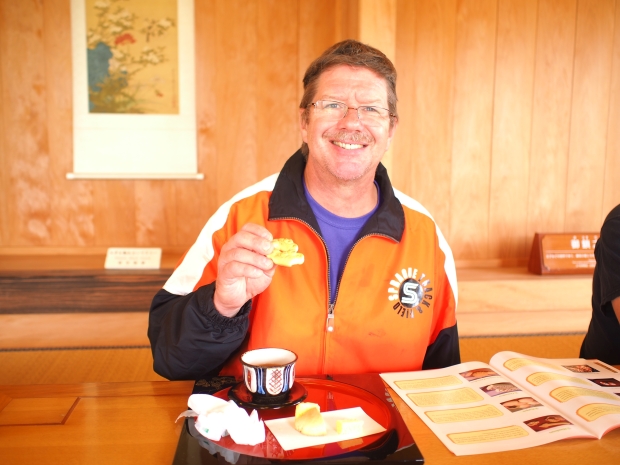
Living the little girl dream: tea time at the castle with my handsome daddy, by Erin Grace, CC BY 2.0
After our tea we finished our tour of the Nanden, then proceeded to the castle itself, where the king issued proclamations, sat in court, and officiated ceremonies. The interior was the same vermilion as the exterior, beams painted with gold dragons and curling smoke. The throne was on a red and gold dais, which itself sat on a black dais, raising it high enough above the floor that a man sitting there would have been able to look down on anyone standing on the floor.
For all its grandeur, it was impossible to forget that it had all been lost and replaced. Placards on everything from the throne to the king’s personal tea implements stated that the original had been lost and was recreated based on ancient records. (Thank you, records-happy Chinese!) Even the king’s camel-shaped seal, a gift from the Chinese emperor which survived at least one fire and the Battle of Okinawa had been lost sometime in the 1940s or 50s. All that remains of the original castle are the bricks of the old foundations, crumbled and ancient, visible through a pane of glass in the floor of the throne room.
We left the castle and made our way into Hokuden—previously an administrative building, now a visitor center with additional artifacts and displays, as well as a gift shop—then out the Uekimon Gate and down the stairs to the park surrounding the castle. The walls rose high above our heads, fifty feet or more, and there I saw that the feet for these smooth high walls were rough and pocked with age. A small brass tablet was placed on the dividing line: an arrow pointing down for the original construction, an arrow pointing up for the new. Everything we’d walked and stood on was new, with only these few old rocks remaining from the original castle.
And now the newness of the castle and the brightness of its colors really sank in. Everything for fifty feet above my head had been utterly destroyed only 70 years ago, still well inside living memory. At the same time the castle was being destroyed, a third of all Ryukyuans died, used as human shields by the Japanese military, succumbed to malaria, or dead by their own hands for fear of even worse atrocities at the hands of the Americans. Seventy years ago, their whole culture was squarely in the path of extinction. Even the island’s ecosystem—the lush greenery that seemed to spring out of the very air—was in threat of collapse, with Admiral Ota of the Japanese Navy reporting “There are no trees, no grass; everything is burnt to the ground.”
Even as they recovered from the battle, how fully defeated the Ryukyuan people must have felt, trapped between their American conquerors on one side and their Japanese conquerors on the other. No matter what kindness or utility either may have served before or since, the rubble of the castle would have been a constant reminder to the survivors of everything they’d lost: their power, their prestige, their loved ones; that everything they had built for themselves had been captured, exploited, bombed and burned.
Five hundred years ago, Chinese envoys came to this magnificent castle looking to trade. Standing here with the Okinawan lords lined up in rows and sitting at attention, they must certainly have felt that this king and his people were no pushovers. Far from eking out an existence clung onto a tiny rock overgrown with jungle, these people had prospered and made themselves great. Looking at the castle now, reconstructed after the horrific Battle of Okinawa, it’s people recovered from the brink extinction, I see the same thing: a people beaten and captured, but not conquered. Far from eking out an existence clung onto a country that considers them an afterthought at best, they rebuild their old monuments and paint them bright to say “We were, we are, we will be.”
*You’ll notice that I switch between using “Ryukyuans” and “Okinawans” in this piece. I use the word “Ryukyuan” to refer to the indigenous people of the island chain and their distinct ethic, cultural, and historic institutions. I use the word “Okinawan” to refer to modern-day inhabitants of the prefecture as a group, as not all residents of Okinawa Prefecture are Ryukyuan.
Address: 1-2 Shurikinjocho, Naha, Okinawa Prefecture 903-0815
Price: The park around the castle and up to the keep is free. Admission to the castle keep is 820 yen (~$8 USD). Tea and cake in the Nanden is 310 yen (~$3 USD).
Tips:
- Arrive early! Every morning at 8:30 there’s an “opening of the gates” ceremony for the gate into the castle keep, followed by Ryukyuan classical music.
- Three times a day on Wednesdays, Fridays, Saturdays, Sundays and Japanese national holidays, there is traditional Ryukyan dancing in the area just outside the castle keep.
- Shuri Castle park and grounds are “barrier free,” meaning that there are wheelchair accessible routes to all attractions.
- Allergy warning for tea and cake in the Nanden: pastries contain eggs and nuts.

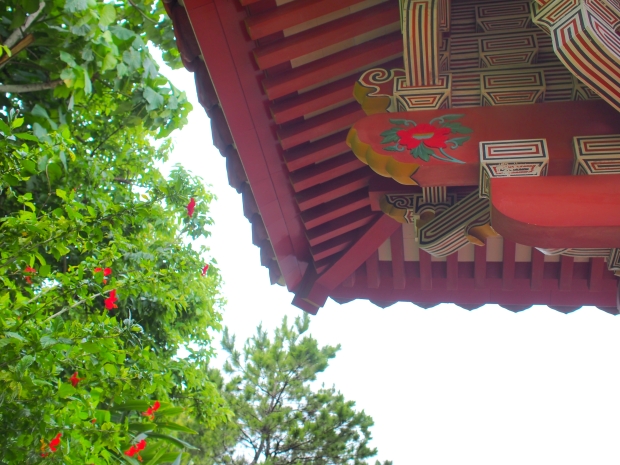
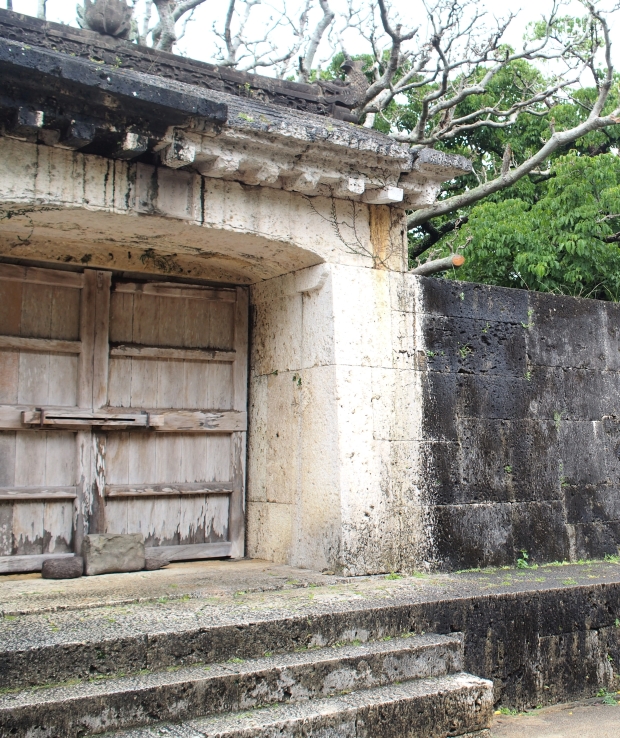
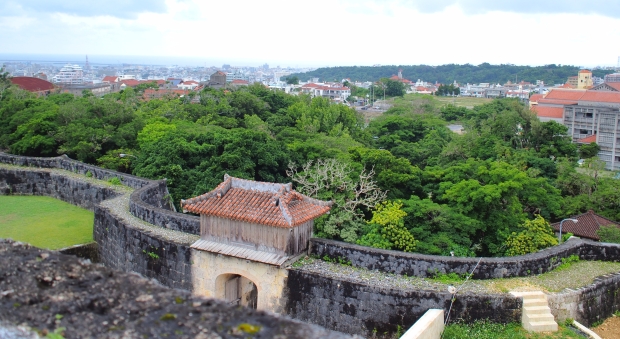
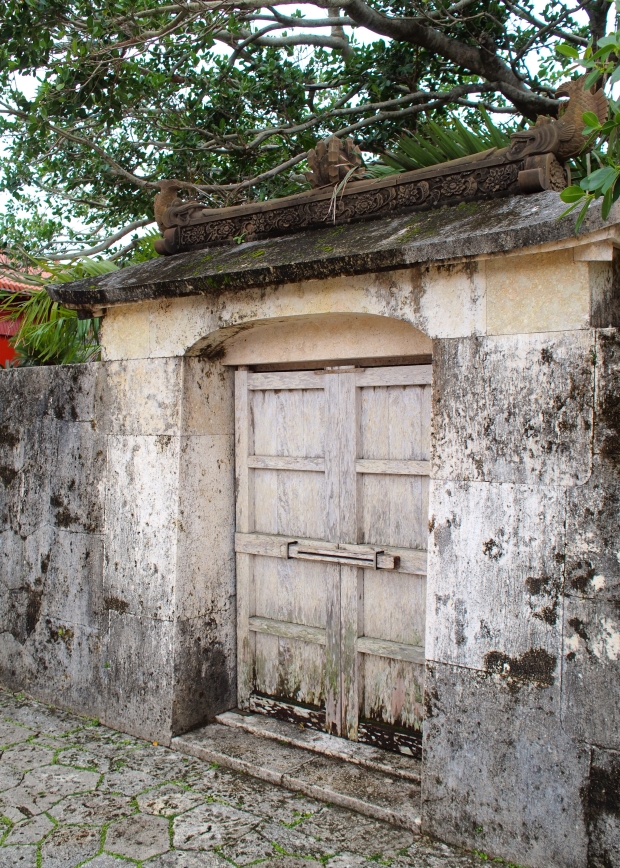

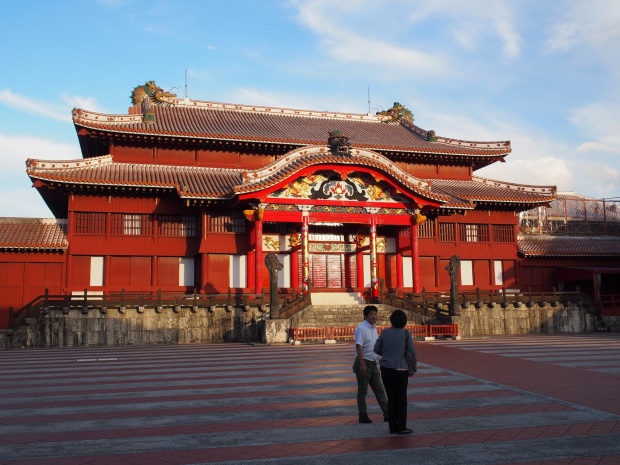
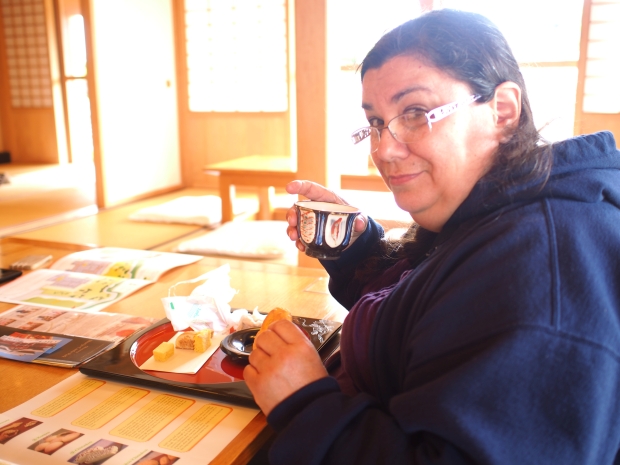
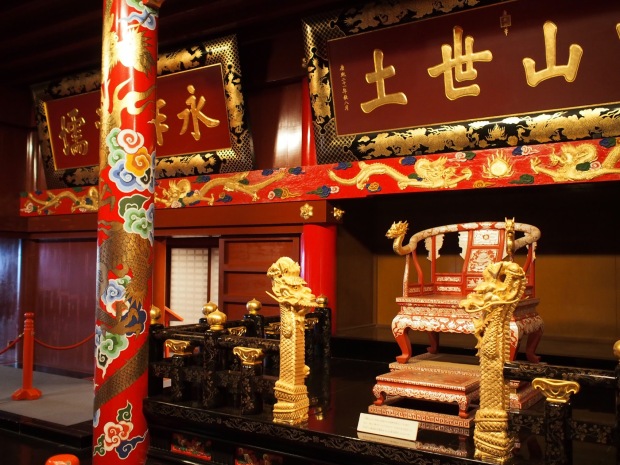
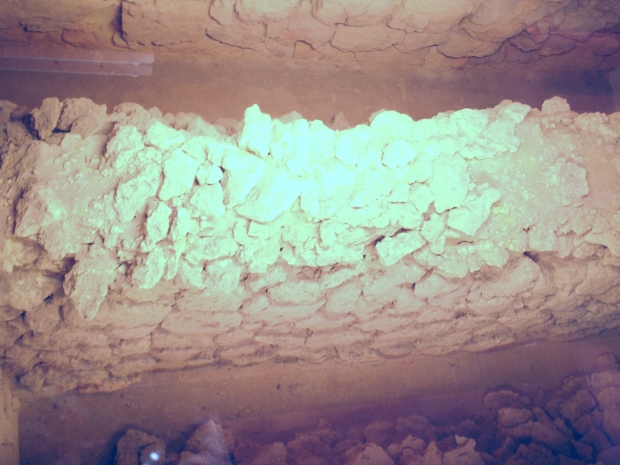
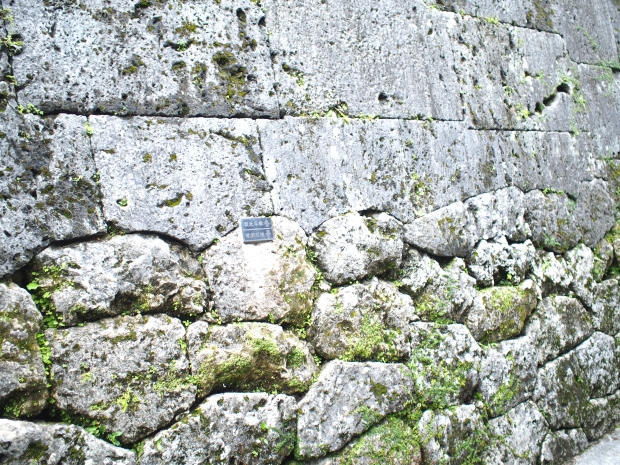
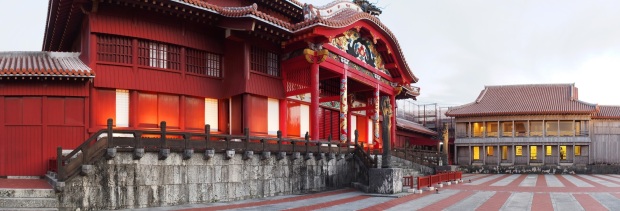
What a beautiful castle! I’d love the chance to visit Okinawa someday ^^
LikeLike
I love Okinawa! It’s hard to overlook the history once you’ve seen it, but it’s s beautiful and thought-provoking; it’s one of my favorite prefectures. 🙂
LikeLiked by 1 person
I love learning about long-ago kingdoms because they almost sound like fairy tales. It’s also a subtle reminder of the impermanence in our current lines in the sand.
LikeLiked by 1 person
I think for me it’s particularly striking because Ryukyuans are still walking around, just living in a different culture. Seeing how they live as both Ryukyuans and Japanese is very interesting to me, both as a Native person and an armchair anthropologist. It’s not the easiest role to live with one kind of “blood” but another kind of culture; seeing how people like the Ryukyuans navigate it gives me ideas about how to live in a way that’s authentic to Chetco/Tututni culture as well as American culture.
LikeLiked by 1 person
That’s *such* a great way to phrase it. That’s how I felt walking around the temples in India, but don’t you find it strange when people discuss that history as though it was a different people vs their own heritage? “They” vs “Our/We.” I’d love to learn more about YOUR long-ago kingdom. Even if it lacks a traditional fairy-tale castle 🙂 I’m one of those armchair anthropologist/historian junkie who enjoy learning about the area I live in or the places I visit. Former cultures are never truly touched on in school. My own education only brushed it enough that we could walk away knowing in other people were here prior to the first wagon train…well, the “Pioneers” unit couldn’t completely exclude some mention anyhow. But, that was exclusively 4th grade the rest I know from only OPB/PBS documentaries.
LikeLiked by 1 person
To be honest, I’m not as well-versed in my own traditional culture as I ought to be. Part of it is tribal politics (a series of ranty blog posts in itself); some of it is that a lot of the culture has been lost over the course of the ethnic cleansing we survived; some of it is that much of what remains isn’t super interesting to me.
The fact that we don’t learn almost anything about Native history in school is even more frustrating, because this was some pretty huge history. Talking to my mom, I’ve learned a lot of really interesting (and devastating, and scary, and harrowing) stuff about how we resisted, how we “lost” the wars, and how we managed after that. I feel like kids would love to hear this stuff, but much like Japan sweeps the conquest of Korea and China under the rug because Japanese don’t like to acknowledge how distastefully they acted, I think the dominant American culture does the same thing with Natives. (And don’t get me started on the hegemony of plains Indian history–OH MY GOD.)
Still, I’ve been looking at writing some “stranger among my own people” posts, and it’ll probably get more pertinent during the summer when the majority of our big cultural events take place. Especially because there’s someone interested, I think these kinds of posts will crop up at least once or twice. 🙂 Is there anything in particular you’d be interested in? I am a towering mountain of ignorance when it comes to my Native culture, so requests would help give me a place to start.
LikeLike
I read the book “Anasazi America” (a book I push on almost anyone) about the anasazi people (creators of Mesa Verde and many cliff dwellings of the southwest). And the parts of it I enjoyed most were their day to day habits (where and how they lived), the things sold and bought for economy (clay pots) with other tribes, and their religion and how it altered their culture and lifestyle as they increased in wealth, and how they fell (in their case it was loss of ag land from tribal battles over the meager resources combined with an awful drought. European settlers came after their massive fall and are more responsible for the elimination of the native language, by both direct and soft-culture influence)
LikeLiked by 1 person
Okay, I’ll try to keep these in mind. Our tribal religion is especially interesting to me. I only know a tiny bit about our most important ceremony, the Nee-dash, and basically nothing else about our religion. I also don’t know much about our pre-colonization economy, so I’ll see what I can find. (Luckily, my mom is good friends with a great resource on both these topics.) Thank you!
LikeLiked by 1 person
Yay! I look forward to reading about the Chetco/Tututni people. You might be one of the very few people recording these traditions! In that sense, it could be of great importance—it will be of great interest to me anyhow. 🙂
LikeLiked by 1 person
Yeah, come to think of it, I’m not sure how prolific younger people are about recording this stuff. Even just on Facebook and Twitter, I don’t know that much is getting out. Thanks for the encouragement!
LikeLiked by 1 person